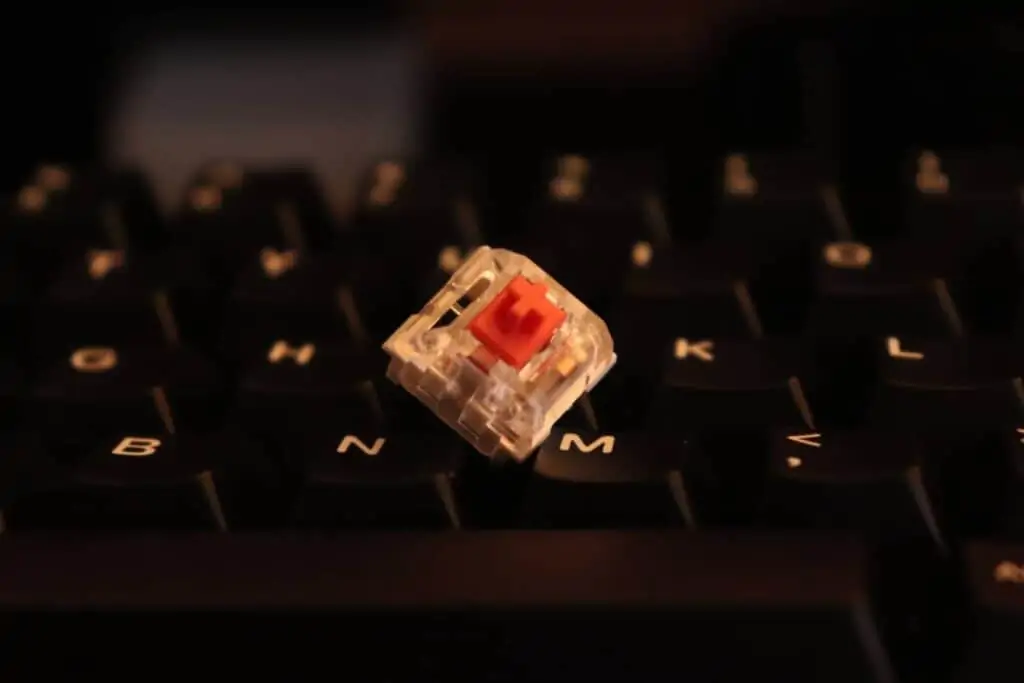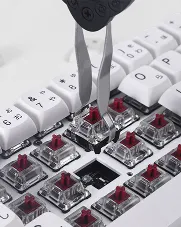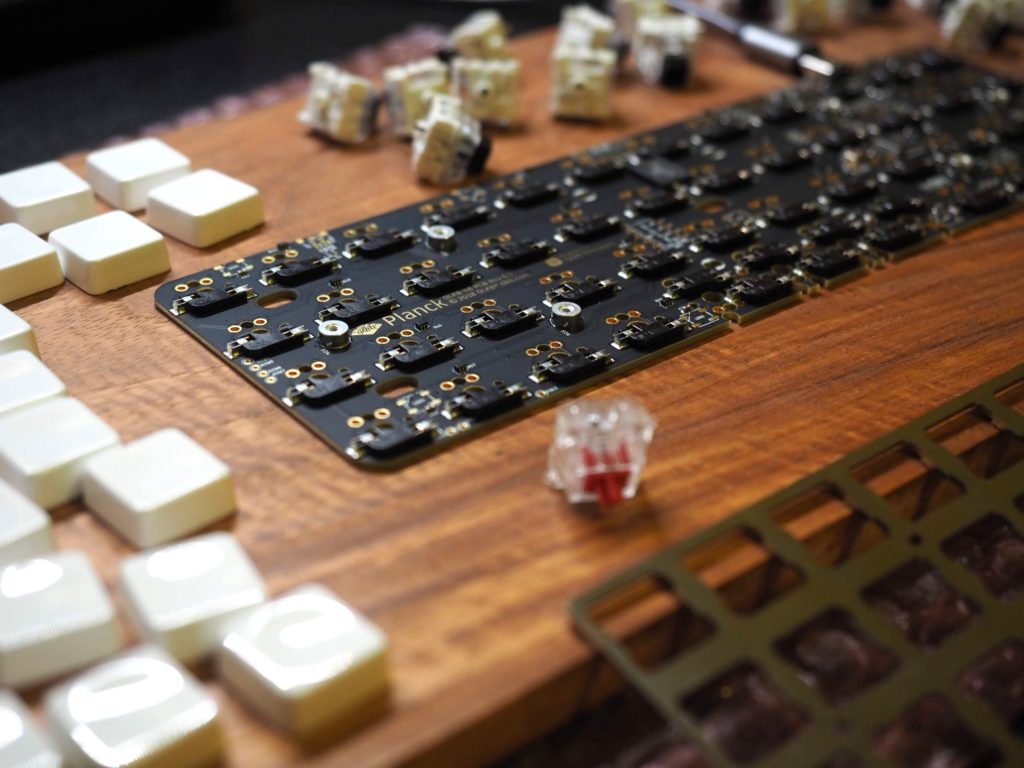Before buying a keyboard, it is critical to understand the different sizes and layouts offered. They directly impact the way you type, game, and your speed. Most people choose 75% or TKL sizes, and in this article, we will compare the different sizes so that you can choose which size and layout are best for your needs.
The Different Types of Keyboard Layouts
Keyboard layouts are how keys are arranged, and the arrangement plays a big role in the overall typing experience. Layouts are designed to optimize all of the space on a keyboard, and most small keyboards have macros that let you perform extra functions. Each arrangement comes with its own advantages and disadvantages, so picking the right one can go a long way.
Here are some of the most commonly used keyboard layouts:
ISO: This is a layout commonly used in Europe. It has a different arrangement for the Shift key and other symbols, and an extra key near the Enter key.
QWERTY: This is the most common layout used by English speakers. Most computers and keyboards use the QWERTY layout.
JIS: JIS is short for Japanese Industrial Standard layout. This is designed for Japanese typing, with unique character placements and keys for kana input.
DVORAK: This is a layout designed for a specific typing style, it reduces finger movement for faster, more ergonomic typing.
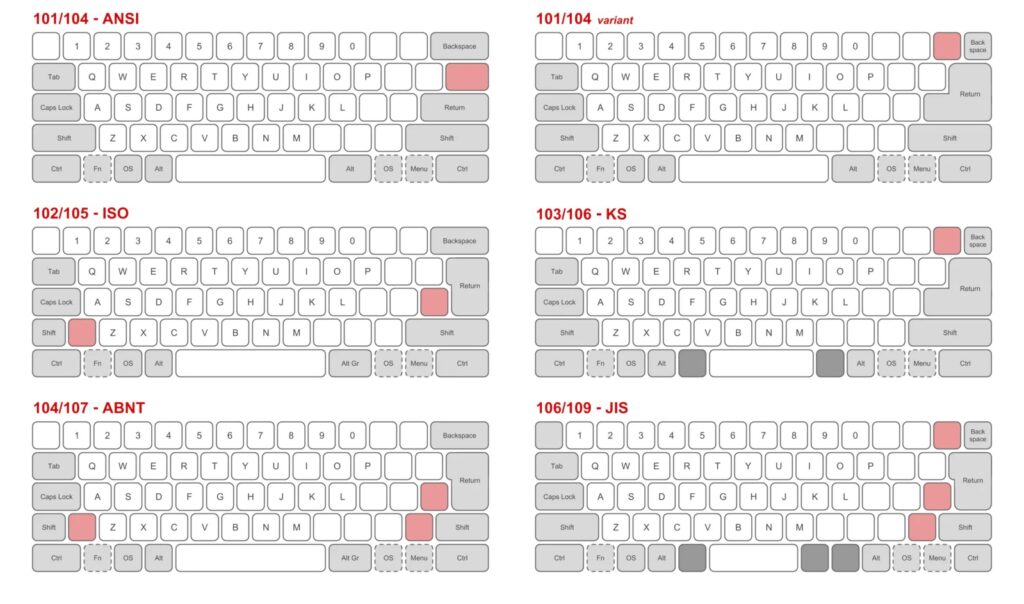
The Different Types Of Keyboard Sizes
Full-Sized Keyboard (100%): This keyboard has all the keys, 104 in total. It has a number pad and function keys, and this keyboard is the best for work-related tasks, where you want all the keys in front of you.
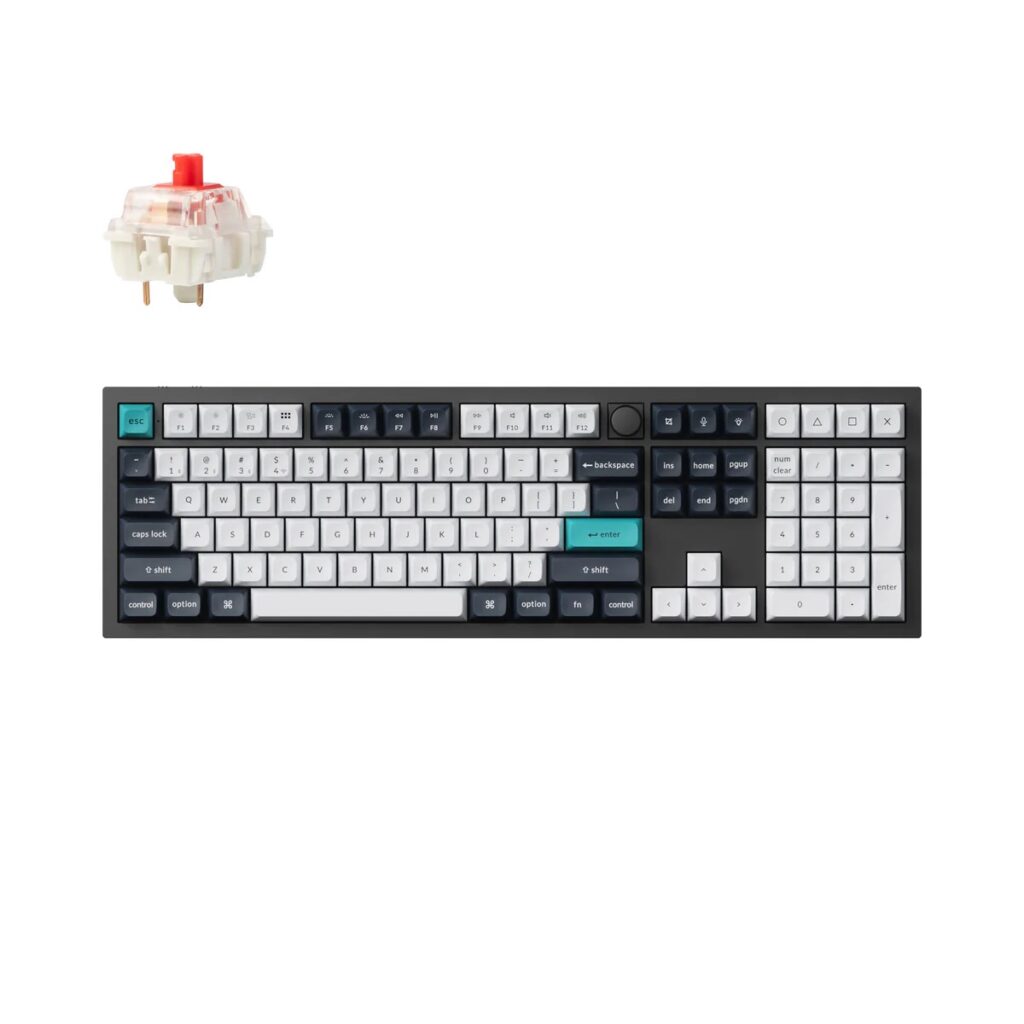
Tenkeyless Keyboard (TKL or 87%): A TKL keyboard doesn’t have the number pad, it has a more compact, clean design. It still has all of the keys you would need while saving a good amount of desk space.
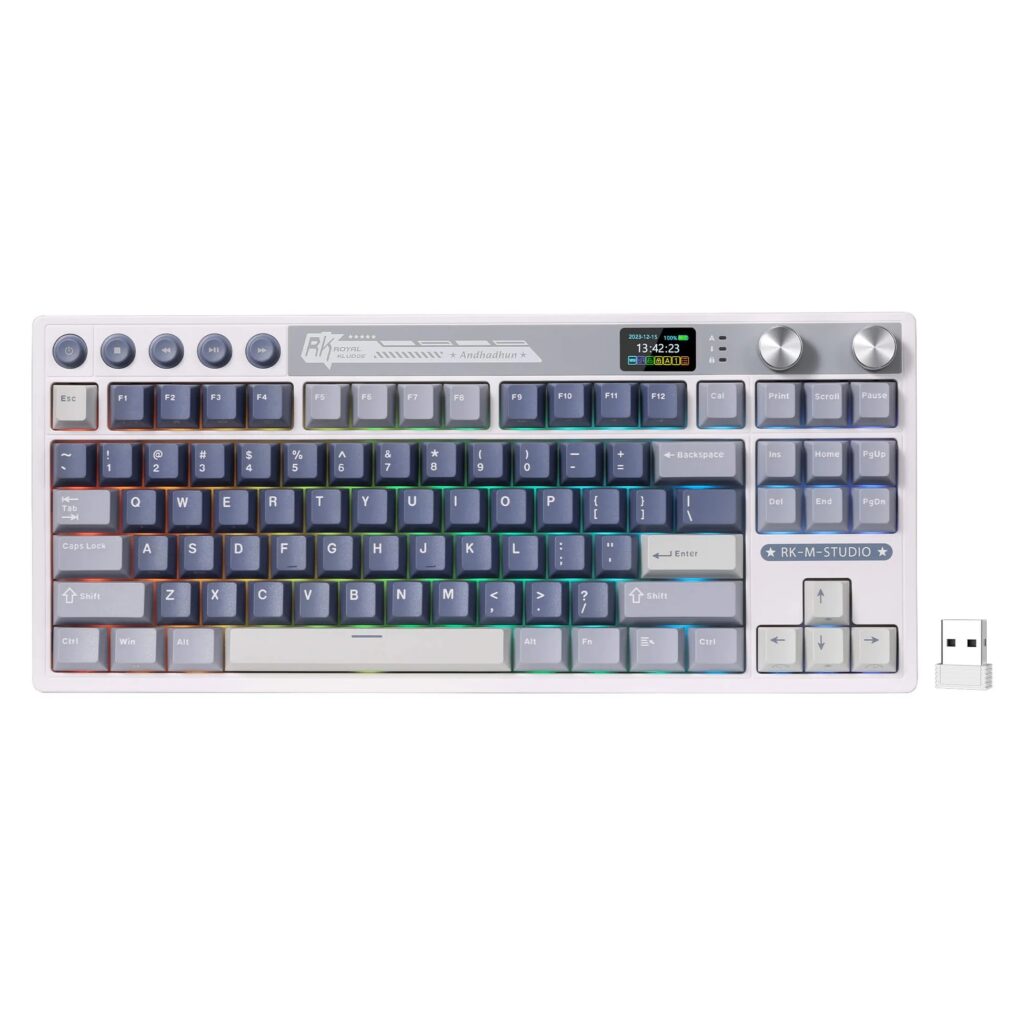
75% Keyboard: This keyboard is ideal for those who have less desk space but they still want all the essential features of a keyboard. It has all the functional keys, a number row, and arrow keys.
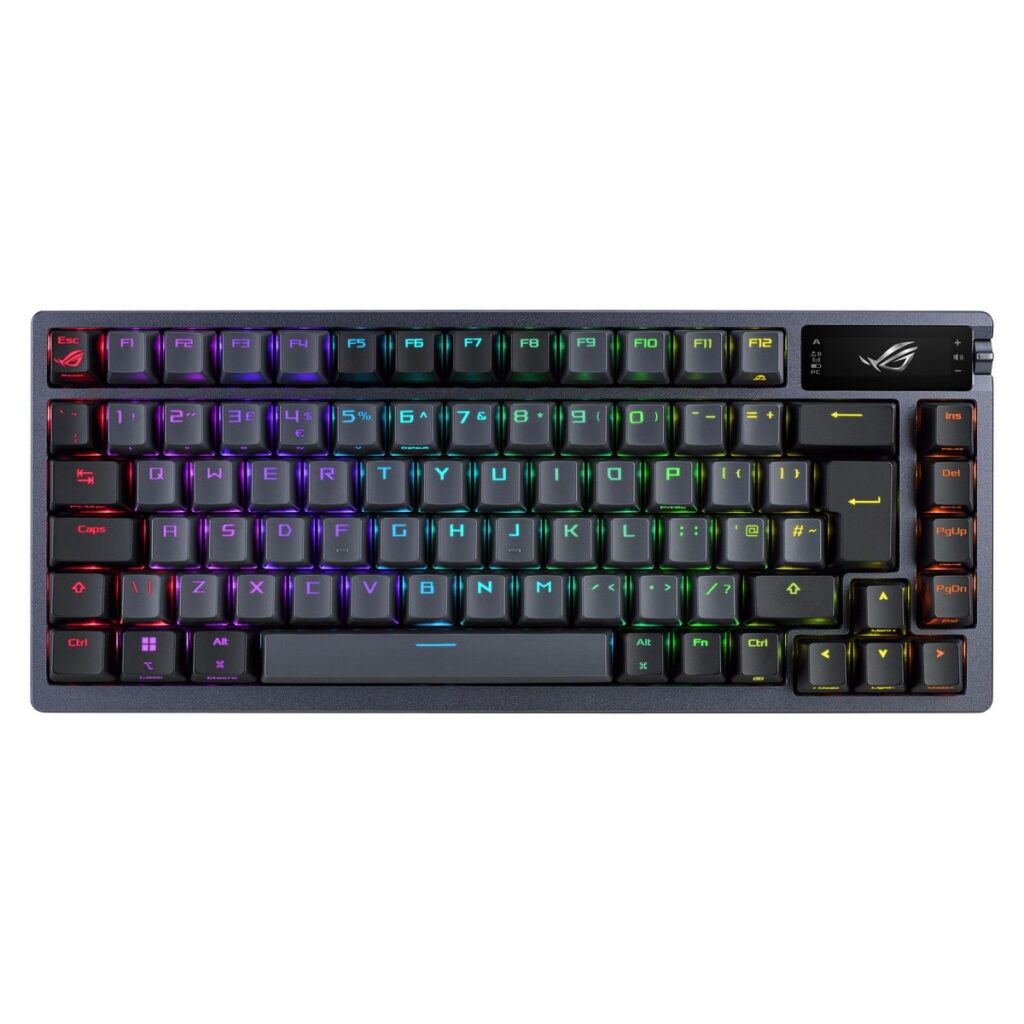
65% Keyboard: A 65% keyboard like the Iqunix Magi65 only has the essential keys. It is lightweight and portable, and it will easily fit on your desk and in compact spaces.
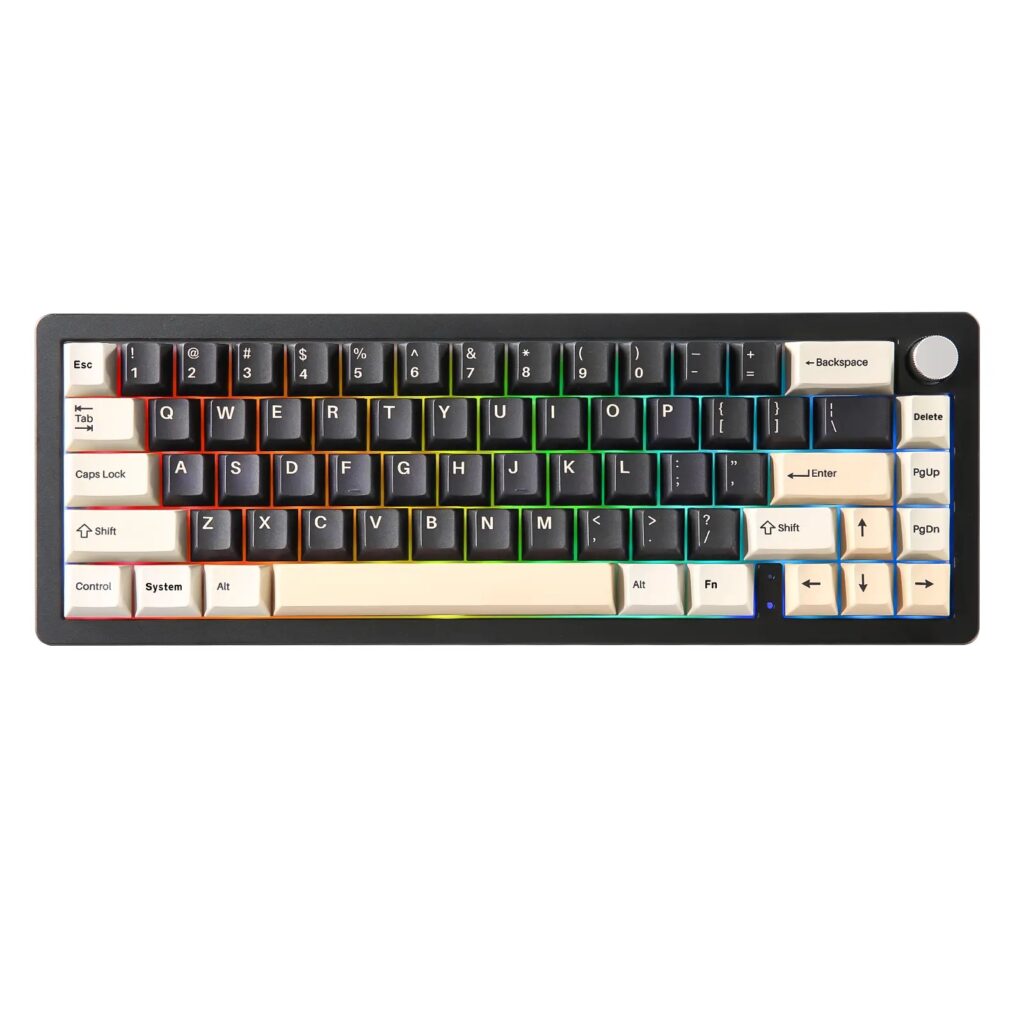
75% Vs 65% Keyboards
A 75% keyboard has more functionality than a 65% keyboard, this reduces the need for macros and layers. You will need macros on a 65% keyboard, no matter what use you have for it. While a 75% keyboard is compact and portable, a 65% keyboard is smaller and lighter, and easier to carry overall.
65% keyboards look better aesthetically, but 75% keyboards have more function. 75% keyboards are also more durable, as they don’t have to compromise on materials to lessen weight.
TKL Keyboards
TKL keyboards like the Epomaker Galaxy80 are the ideal choice for most people. They have good build quality and all the essential keys. They have a function row, and the only thing they don’t have is a number pad. They can be used for gaming, programming work, and a wide variety of things.
What Size And Layout Should You Choose?
In the end, it all comes down to what you prefer and what your needs are. If you keyboard for casual work, or if you don’t have much desk space and you are looking for a compact keyboard, then you should get a 75% or a 65% keyboard. If you do have desk space, and you are willing to spend a little extra, then you should get a TKL or a full-sized keyboard. TKL and full-sized keyboards are better for gaming and work like data entry, as they have more keys and a number pad, and this eliminates the need for layers and macros.
When choosing the layout, try out different layouts and see what suits you. If you aren’t sure, then just choose the layout that you were using already, which in most cases is ISO or QWERTY.
